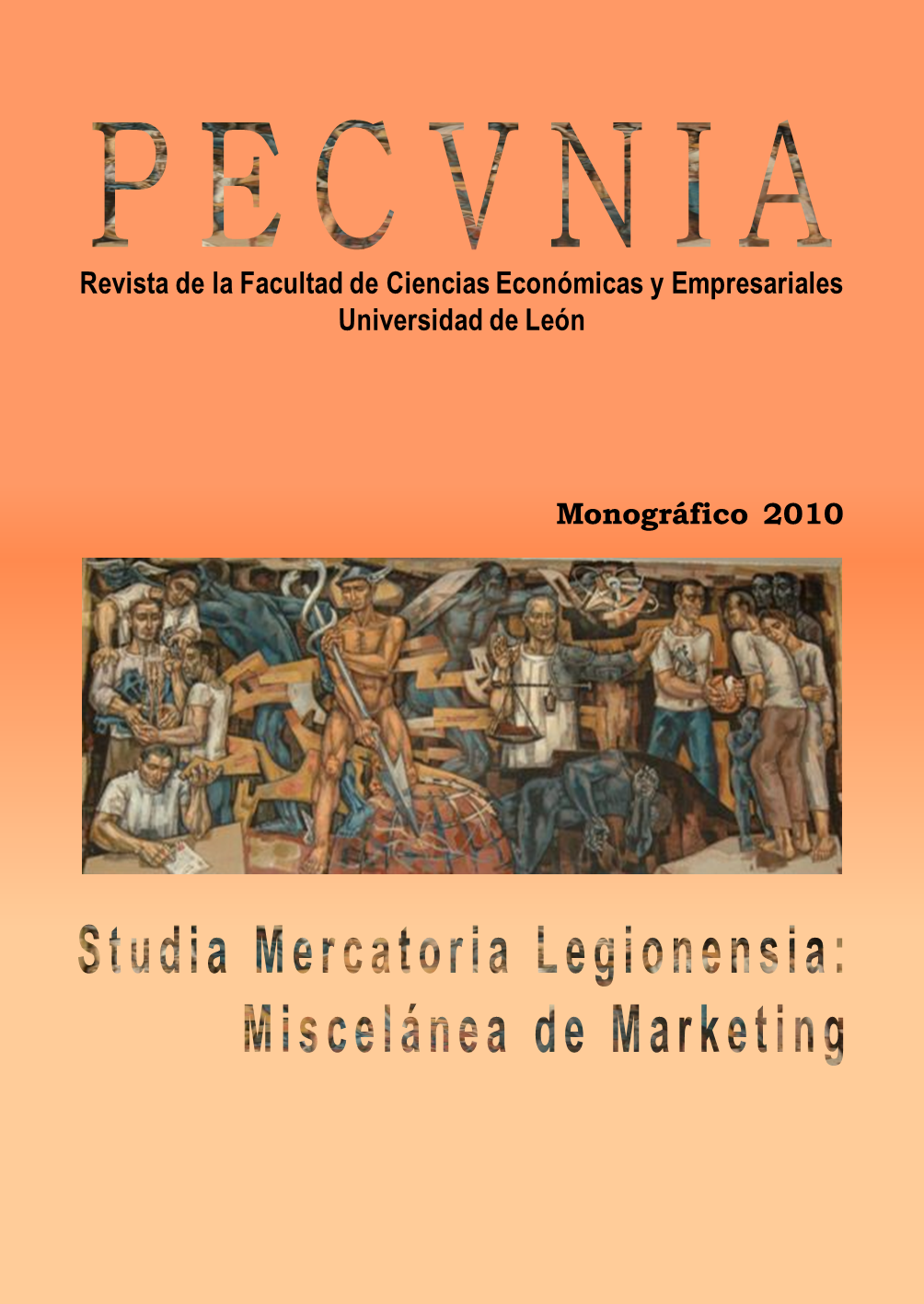La espiral de la credibilidad en los modelos de calidad de las administraciones públicas locales
DOI:
https://doi.org/10.18002/pec.v0i2010.762Palabras clave:
Calidad, Servicio público, Satisfacción, Credibilidad, Gobiernos locales, CiudadanoResumen
En el actual contexto de las administraciones públicas locales, sometidas a un proceso de modernización y actualización constante en los últimos años, el concepto de calidad constituye el principal instrumento para la búsqueda del progreso de los servicios y de la competitividad. Dentro de este marco, es necesario conocer los factores determinantes de la calidad del servicio público local percibido por los ciudadanos y la repercusión de ésta sobre la satisfacción y la credibilidad. Consecuencia de la relación existente entre las variable mencionadas, la credibilidad se configura como elemento de medida de los resultados procedentes de la aplicación de las diferentes política públicas y como elemento acelerador del proceso de mejora de la calidad de estas entidades públicas.Nowadays public administrations are involved in a constant process in terms of modernization of theirs structures and updating, the concept of quality is the mainly instrument for looking for progress in services and competitiveness. Within the public sector framework, it’s necessary to know factors that determine perceived service quality in local governments by citizens and relationship between quality and satisfaction. As a result of this correspondence, credibility is going to be the element for measuring results from different public politics applied and like an accelerator for improving quality process in public organizations.
Descargas
Citas
Andaleeb, S.S. (1995). “Dependence relations and the moderating role of trust: impli- cations for behavioral intentions in marketing channels”. International Journal of Research in Marketing, vol. 12, n. 2, 157-172.
Anderson, E.; Lodish, L. y Weitz, B. (1987). “Resource allocation behavior by channel members”. Journal of Marketing Research, vol. 24, n. 1, pp. 85-97.
Anderson, J.C. y Narus, A. (1992). “A model of distributor firm and manufacture firm working partnerships”. Journal of Marketing, vol. 54, n. 1, pp.42-58.
Andreassen, T.W. (1994). “Satisfaction, loyalty and reputation as indicators of cus- tomer orientation in the public sector”. International Journal of Public Sector Management, vol. 7, n. 2, pp. 16-34.
Baker, L.; Wagner, T.H. y Singer, S. (2003). “Use of the Internet and E-mail for Health Care Information Results from a National Survey”. Journal of the American Medical Association, vol. 289, n. 18, pp. 2400–2406.
Chin, W.W. (1998). “The partial least squares approach for structural equation modeling”. In, Modern methods for business research. G.A. Marcoulides (Ed.), Mahwah, NJ: Lawrence Erlbaum Associates, pp. 295-336.
Coulter, K. y Coulter, R. (2002). “Determinants of trust in a service provider: the moderating role of length of relationship”. Journal of Services Marketing, vol. 16, n. 1, pp. 35-50.
Crosby, L.A.; Evans, K.R. y Cowles, D. (1990). “Relationship quality in services selling: An interpersonal influence perspective”. Journal of Marketing, vol. 54, n. 3, pp. 68- 81.
Dalrymple, J.F.; Donnelly, M.; Wisniewski, M. y Currie, A.C. (1995). “Measuring service quality in local government”. In, Kanji G.K. (Ed.), Proceedings of the First World Congress on TQM. Londres: Chapman and Hall, pp. 263-266.
De Wulf, K. y Odekerken-Schröder, G. (2003). “Assessing the impact of a retailer’s relationship efforts on consumer’ attitudes and behaviour”. Journal of Retailing and Consumer Services, vol. 10, n. 2, pp. 95-108.
DeSarbo, W.S.; Huff, L.; Rolandelli, M.M. y Choi, J. (1994). “On the measurement of perceived service quality. A conjoint analysis approach”. In, Service quality. New di- rections in theory and practice. Rust, R.T. y Oliver, R.L. (Eds.). Thousand Oaks, Cali- fornia: SAGE Publications Inc., pp. 201-222.
Donnelly, M. y Shiu, E. (1999). “Assessing service quality and its link with value for money in a UK local authority's housing repairs service using the SERVQUAL approach”. Total Quality Management, vol. 10, n. 4/5, pp. 498-506.
Donnelly, M.; Wisniewski, M.; Dalrymple, J.F. y Curry, A.C. (1995). “Measuring service quality in local government: The SERVQUAL approach”. International Journal of Public Sector Management, vol. 8, n. 7, pp. 15-20.
Fernández Barcala, M. (2000). “Validación de SERVQUAL como instrumento de medida de la calidad del servicio bancario”. Revista Europea de Dirección y Economía de la Empresa, vol. 9, n. 1, pp. 57-70.
Fornell, C. (1982). “A national customer satisfaction barometer: The Swedish experience”. Journal of Marketing, vol. 56, n. 1, pp. 6-21.
Ganesan, S. (1994). “Determinants od long-term orientation in buyer-seller relation- ship”. Journal of Marketing, vol. 58, n. 2, pp. 1-19.
García, E.; Gil, J. y Rodríguez, G. (2000). Análisis factorial. Colección Cuadernos de Estadística. Madrid: La Muralla.
Gaster, L. (1996). “Quality services in local government: a bottom-up approach”. Jour- nal of Management Development, vol. 15 n. 2, pp. 80-96.
Geisser, S. (1974). “A predictive approach to the random effects model”. Biometrika, vol. 61, n. 1, pp. 101-107.
Geyskens, I.; Steenkamp, J. y Kumar N. (1998). “Generalizations about trust in marketing channel relationships using meta-analysis”. International Journal of Research in Marketing, vol. 15, n. 3, pp. 223-248.
Gil, I. (1996). “La evaluación de la calidad de servicio percibida y las limitaciones de la herramienta Servqual”. Revista Europea de Dirección y Economía de la Empresa, vol. 5, n. 2, pp. 19-32.
Grönroos, C. (1990). Service management and marketing: Managing the moments of truth in service competition. Lexington, MA: Lexington Books.
Gutiérrez, P.; Vázquez, J.L.; Vaughan, R. y Edwards, J. (2009). “Quality dimensions in the public sector: Municipal services and citizen’s perception”. International Review on Public and Non Profit Marketing, vol. 6, n. 1, pp 75-90.
Hair, J.F.; Anderson, R.E.; Tatham, R.L. y Black, W.C. (1999). Análisis multivariante. 5ª ed. Madrid: Prentice Hall.
Kandampully, J. y Suhartanto, D. (2000). “Customer loyalty in the hotel industry: The role of customer satisfaction and image”. International Journal of Contemporary Hospitality Management, vol. 12, n. 6, pp. 346-351.
Larzelere, R. y Huston, T. (1980). “The dyadic trust scale: Toward understanding inter- personal CONF in close relationships”. Journal of Marriage and the Family, vol. 42, n. 3, pp. 595-604.
Mayer, R.; Davis, J. y Shoorman, F. (1995). “An integrative model of organizational trust”. Academy of Management Review, vol. 20, n. 3, pp. 709-734.
Morgan, R. y Hunt, S. (1994). “The commitment - trust theory of relationship marketing”. Journal of Marketing, vol. 58, n. 3, pp. 20-38.
Oliver, R.L. (1980). “A cognitive model of the antecedents and consequences of satis- faction decisions”. Journal of Marketing Research, vol. 17, n. 4, pp. 460-469.
Parasuraman, A.; Zeithaml, V.A. y Berry, L.L. (1985). “A conceptual model of service quality and its implications for future research”. Journal of Marketing, vol. 49, n. 4, pp. 41-50.
Rivard, S.; Poirier, G.; Raymond, L. y Bergeron, F. (1994). “Development of a measure
to assess the quality of user-developed applications”. In, Proceedings of the Twenty- Seventh Annual Hawaii International Conference on System Sciences, J.F. Nuna- maker y R.H. Sprague (Eds.). Hawaii, vol. IV, pp. 522-531.
Roy, M.; Dewit, O. y Aubert, B. (2001). “The impact of interface usability on trust in web retailers”. Internet Research: Electronic Networking Applications and Policy, vol. 11, n. 5, pp. 388-398.
Sako, M. y Helper, S. (1997). “Determinants of trust in supplier relations: Evidence from the automotive industry in Japan and the United States”. Journal of Economic Behaviour and Organization, vol. 34, n. 3, pp. 387-417.
Sancho Royo, D. (1999). Gestión de servicios públicos: Estrategias de marketing y calidad. Madrid: Ed. Tecnos.
Scott, D. y Shieff, D. (1993). “Service quality components and group criteria in local government”. International Journal of Service Industry Management, vol. 4, n. 4, pp. 42-53.
Sheldom, K. (1996). Credibility is risky business: An interview with Vincent T. Covello. Ph.D. Commun. World 13.
Sirdeshmukh, D.; Singh, J. y Sabor, B. (2002). “Consumer trust, value and loyalty in relational exchanges”. Journal of Marketing, vol. 66, n. 1, pp. 15-37.
Stone, M. (1974). “Cross validatory choice and assessment of statistical predictions”. Journal of the Royal Statistical Society, Series B 36, pp. 111-133.
Descargas
Publicado
Cómo citar
Número
Sección
Licencia
Derechos de autor 2010 Pablo Gutiérrez Rodríguez, José Luis Vázquez Burguete, José Luis Placer Galán

Esta obra está bajo una licencia internacional Creative Commons Atribución-NoComercial-CompartirIgual 4.0.
Los autores que publican en esta revista están de acuerdo con los siguientes términos:- Los autores ceden de forma no exclusiva los derechos de explotación (reproducción, distribución, comunicación pública, transformación) a la Universidad de León, por lo que pueden establecer, por separado, acuerdos adicionales para la distribución no exclusiva de la versión de la obra publicada en la revista (por ejemplo, alojarlo en un repositorio institucional o publicarlo en un libro), con un reconocimiento de su publicación inicial en esta revista.
- Este trabajo se encuentra bajo la Creative Commons Attribution-NonCommercial-ShareAlike 4.0 International License. Puede consultarse desde aquí la versión informativa y el texto legal de la licencia.
- Se permite y se anima a los autores a difundir electrónicamente las versiones pre-print (versión antes de ser evaluada) y/o post-print (versión evaluada y aceptada para su publicación) de sus obras antes de su publicación, ya que favorece su circulación y difusión más temprana y con ello un posible aumento en su citación y alcance entre la comunidad académica.












